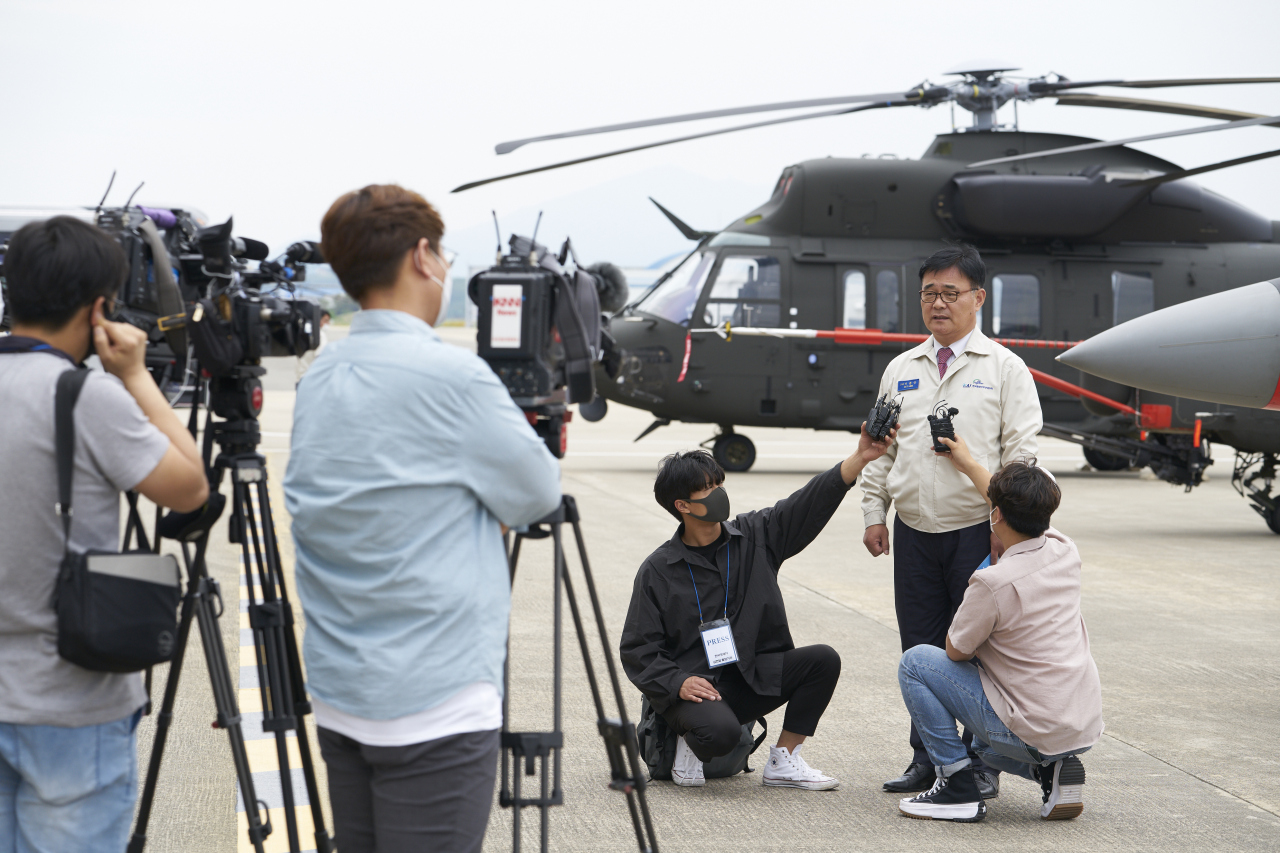 |
KAI Vice President and General Manager Lee Bong-keun explains KAI’s export plans to reporters at the airfield. (KAI) |
SACHEON -- It takes guts to invite several diplomats at one place and show off a chopper, especially when a deadly pandemic is creating chaos around the world.
However, that was exactly what Korea Aerospace Industries did last week.
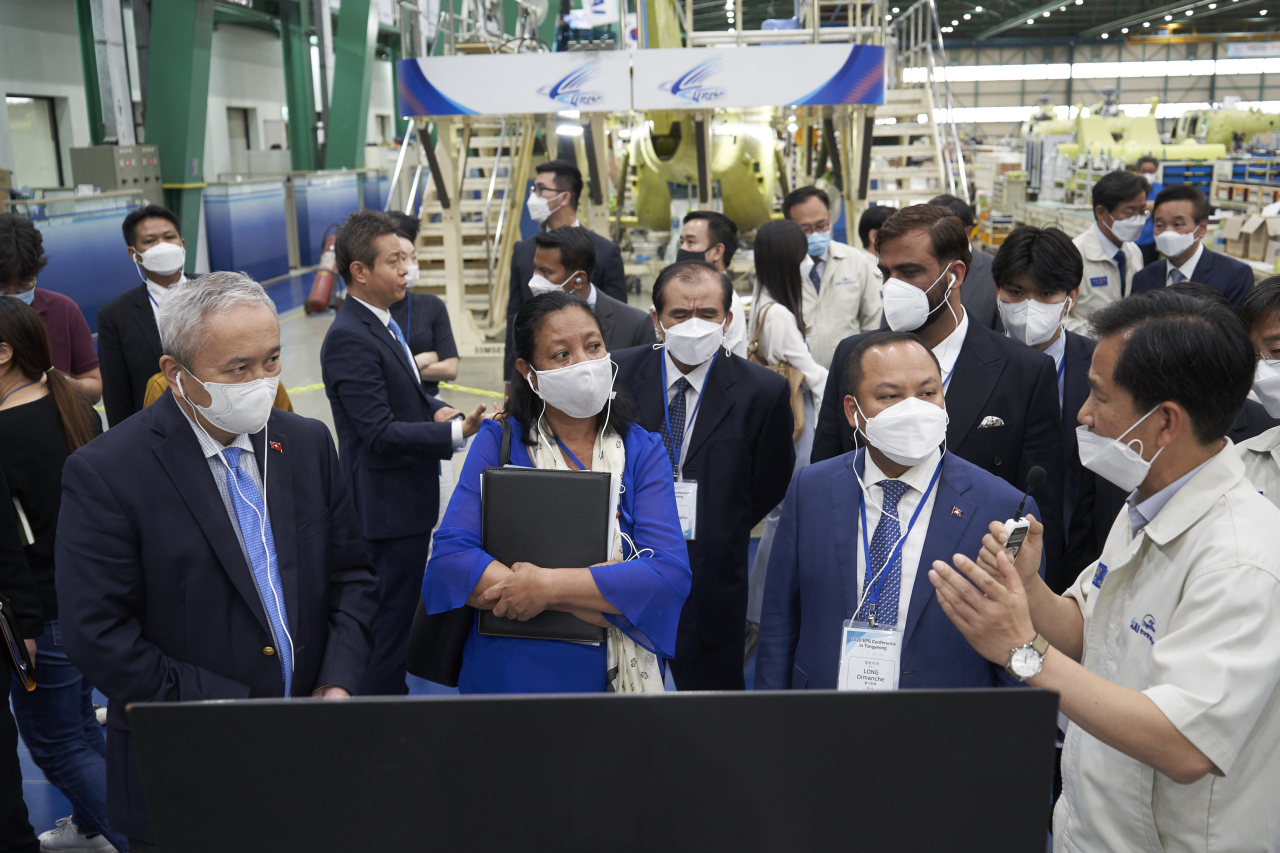 |
Diplomats listen to a presentation at KAI’s facility in Sacheon, Gyeongsang Province. (KAI) |
South Korea’s sole aircraft manufacturer on Wednesday brought diplomats from 16 countries and local reporters at its headquarters in Sacheon, South Gyeongsang Province, to give them a ride on its Chamsuri helicopters, a police version of military helicopter Surion.
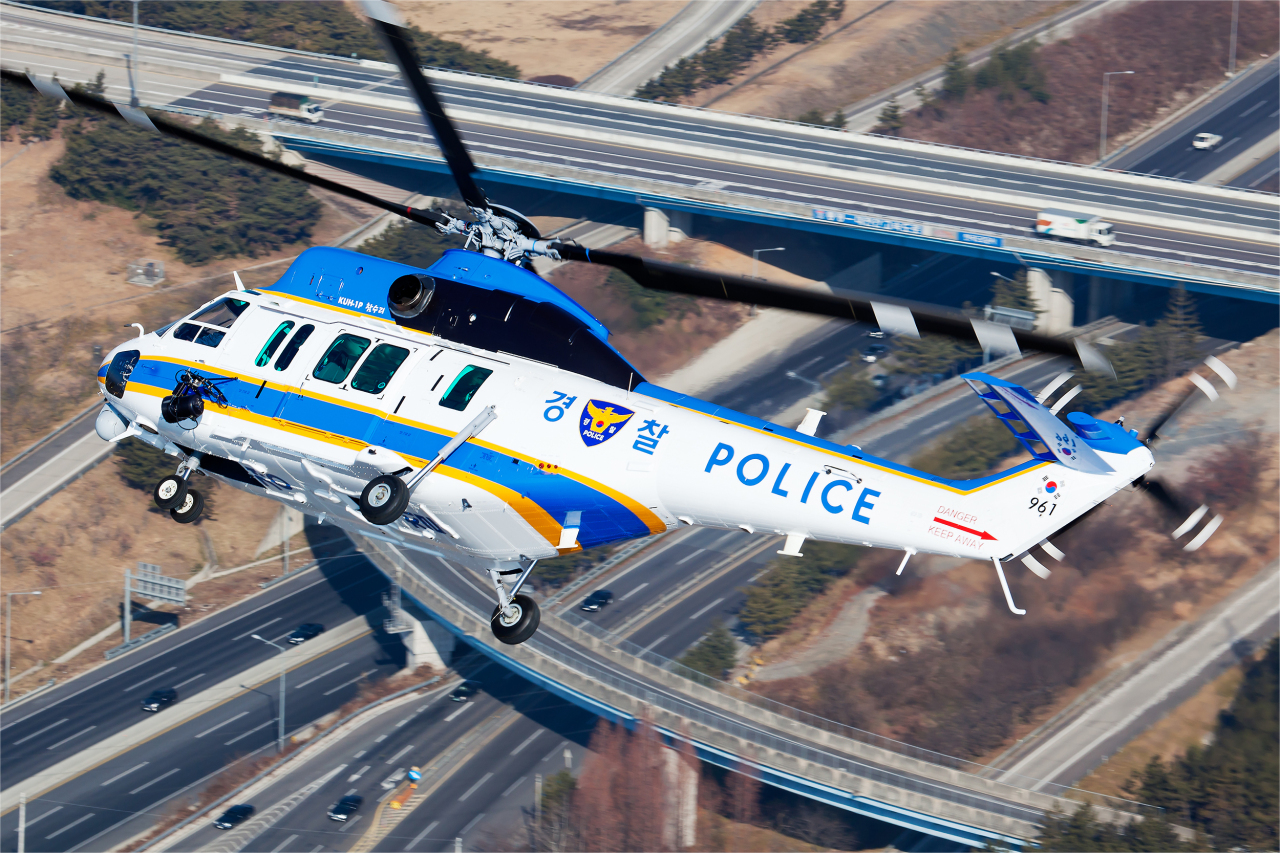 |
Korea Aerospace Industries’ Chamsuri police helicopter (KAI) |
The event itself was a statement to the world from both KAI and South Korea that Chamsuri helicopters are ready for the global stage.
The flight manifest included Bangladeshi Ambassador to Korea Abida Islam and Cambodian Ambassador to Korea Long Dimanche and representatives of 14 other countries including Indonesia, Thailand, the Philippines, Sri Lanka, Pakistan, East Timor, Kyrgizstan, Myanmar and Mongolia. Of them Indonesia, Thailand and the Philippines operate South Korean aircrafts.
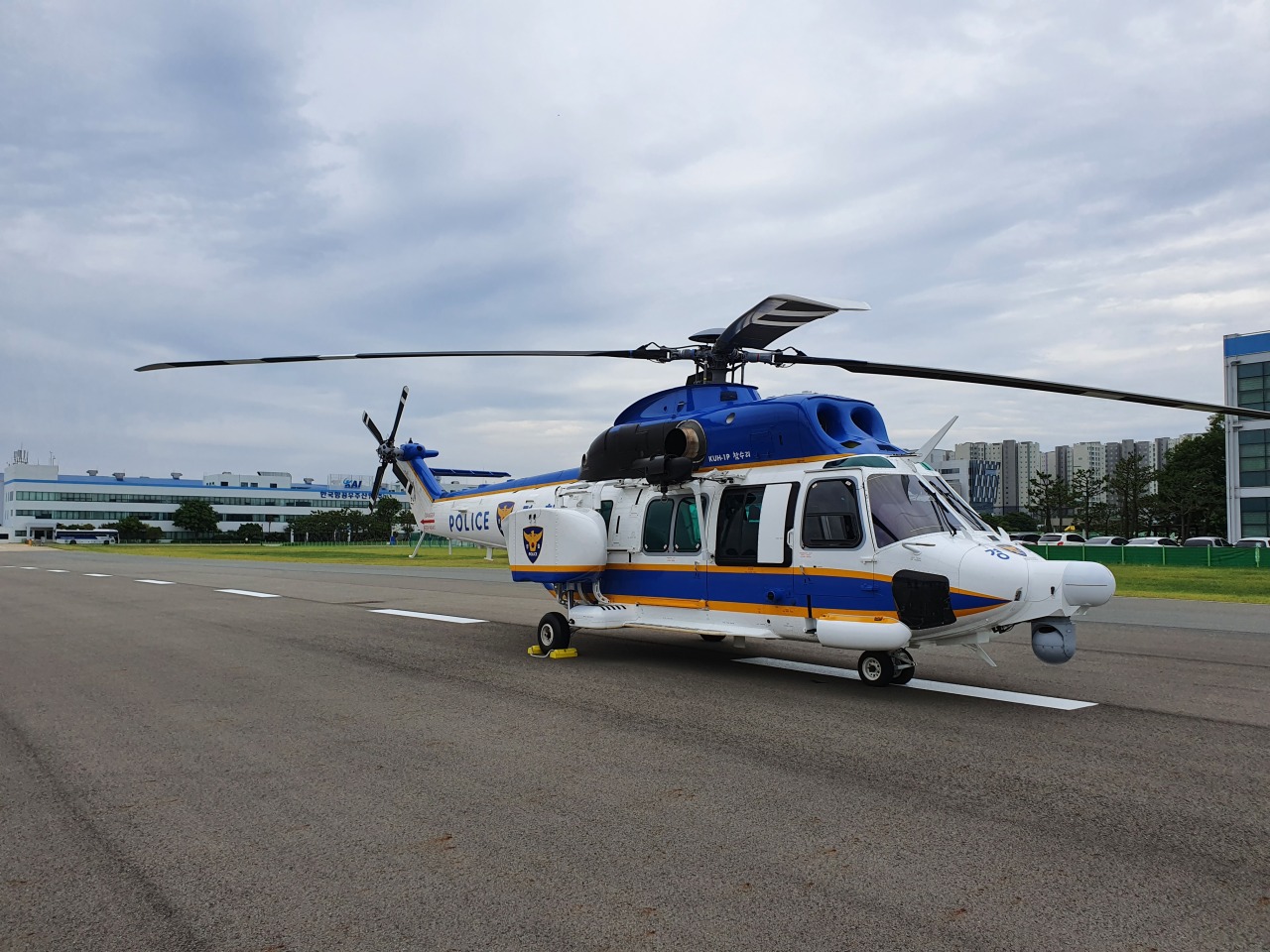 |
KAI’s Chamsuri policer helicopter (Kim Byung-wook/The Korea Herald) |
Reporters waited for the three Chamsuri helicopters carrying the diplomats to return to the airfield after a 20-minitue ride. The helicopters soon approached from the murky afternoon skyline, waiting for each other to align in a single file just few meters above the ground, landing simultaneously, showing off the behemoth’s stable hovering capabilities.
As the diplomats hopped out, their clothes flapping from the propellers powered by two 1,855-horse-power engines, reporters flocked to take pictures furiously like tourists in Las Vegas.
Now it was time for the reporters.
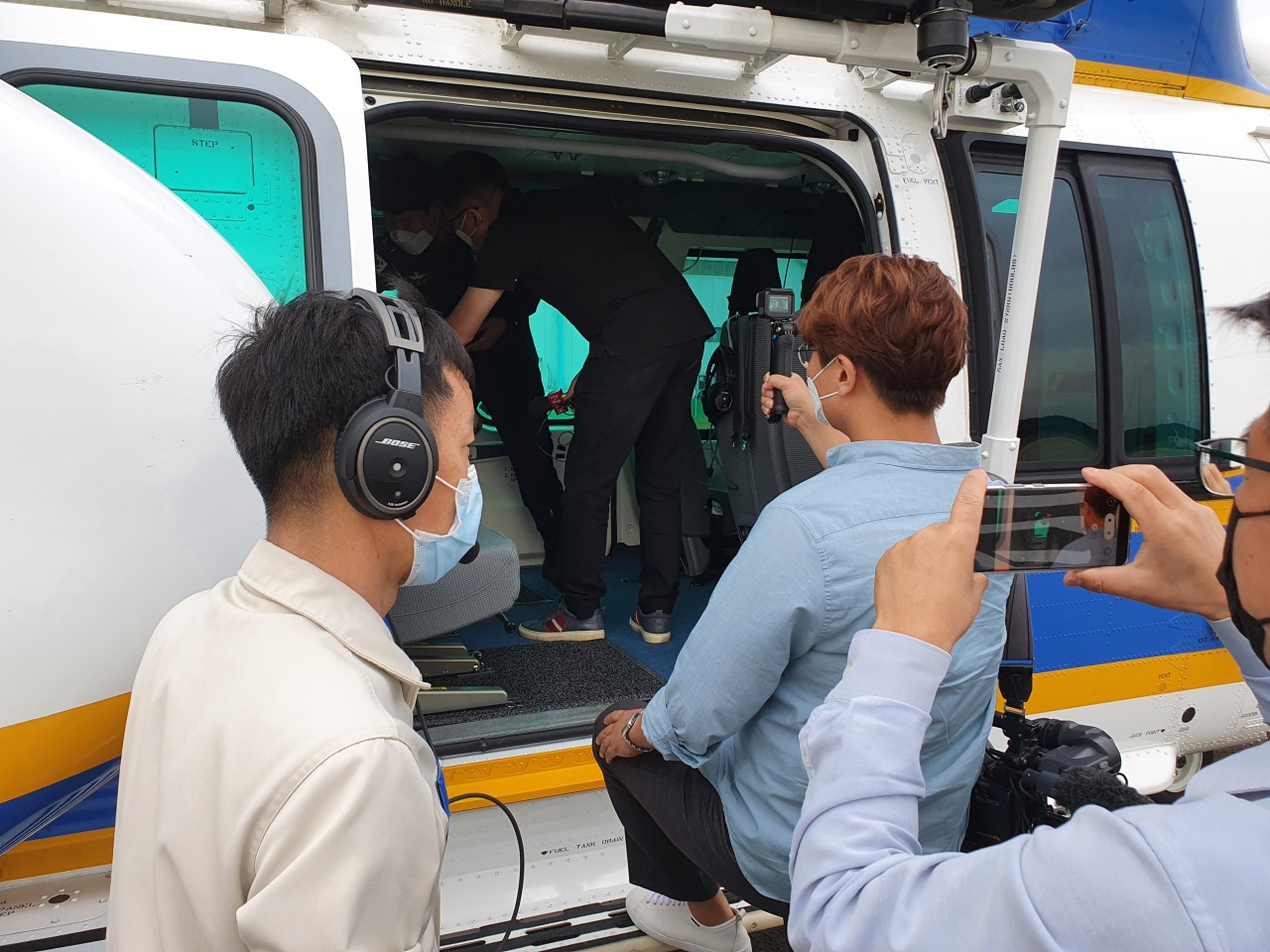 |
Reporters board Chamsuri helicopter and take pictures. (Kim Byung-wook/The Korea Herald) |
After buckling up a four-point safety belt inside a two-meter-wide cabin, a radio voice of a pilot came out from Bose noise-canceling headphone that hardly blocked out the blaring engine sounds.
“Welcome to Chamsuri, a 14-seater chopper with maximum speed of 281 kilometers. Chamsuri can fly as long as 801 kilometers and stay in the air as much as four hours and 11 minutes. With maximum altitude of over 2,700 meters, it can perform hovering flight at the peak of Mount Baekdu,” said KAI pilot Kim Chan-dong with tanned skin, charismatic voice and of course, dark sunglasses.
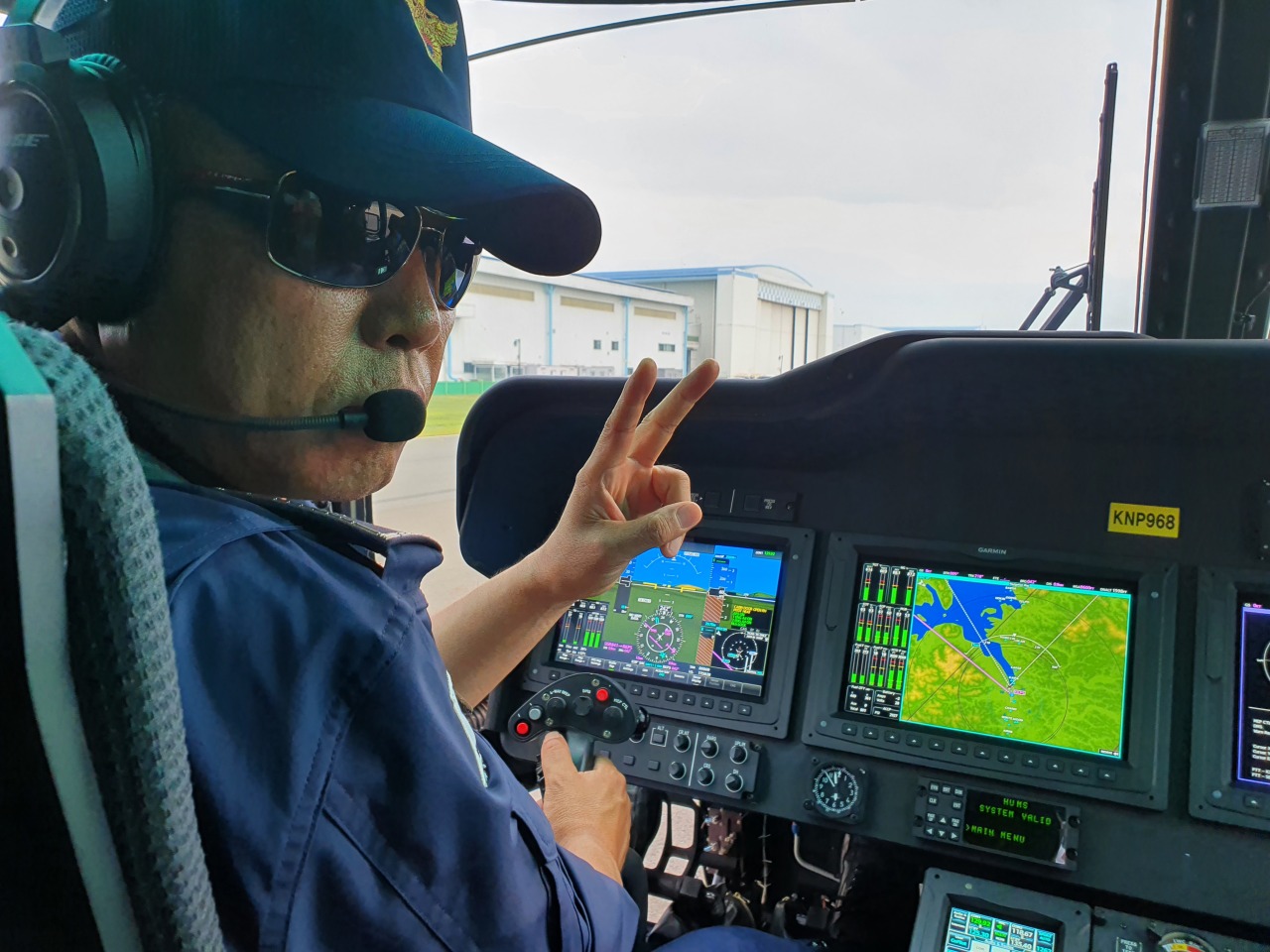 |
KAI pilot Kim Chan-dong gives v-sign (Kim Byung-wook/The Korea Herald) |
After takeoff, despite the pilot’s fancy introduction, the flight felt too normal, like riding a merry-go-round. However, the disappointment soon turned into a realization that Chamsuri helicopter vibrated no more than the two-hour ride on the highway inside Hyundai Motor’s Grandeur sedan from Gimhae International Airport to the KAI headquarters.
Then, when things were about to get loose, the pilot began a tactical flight.
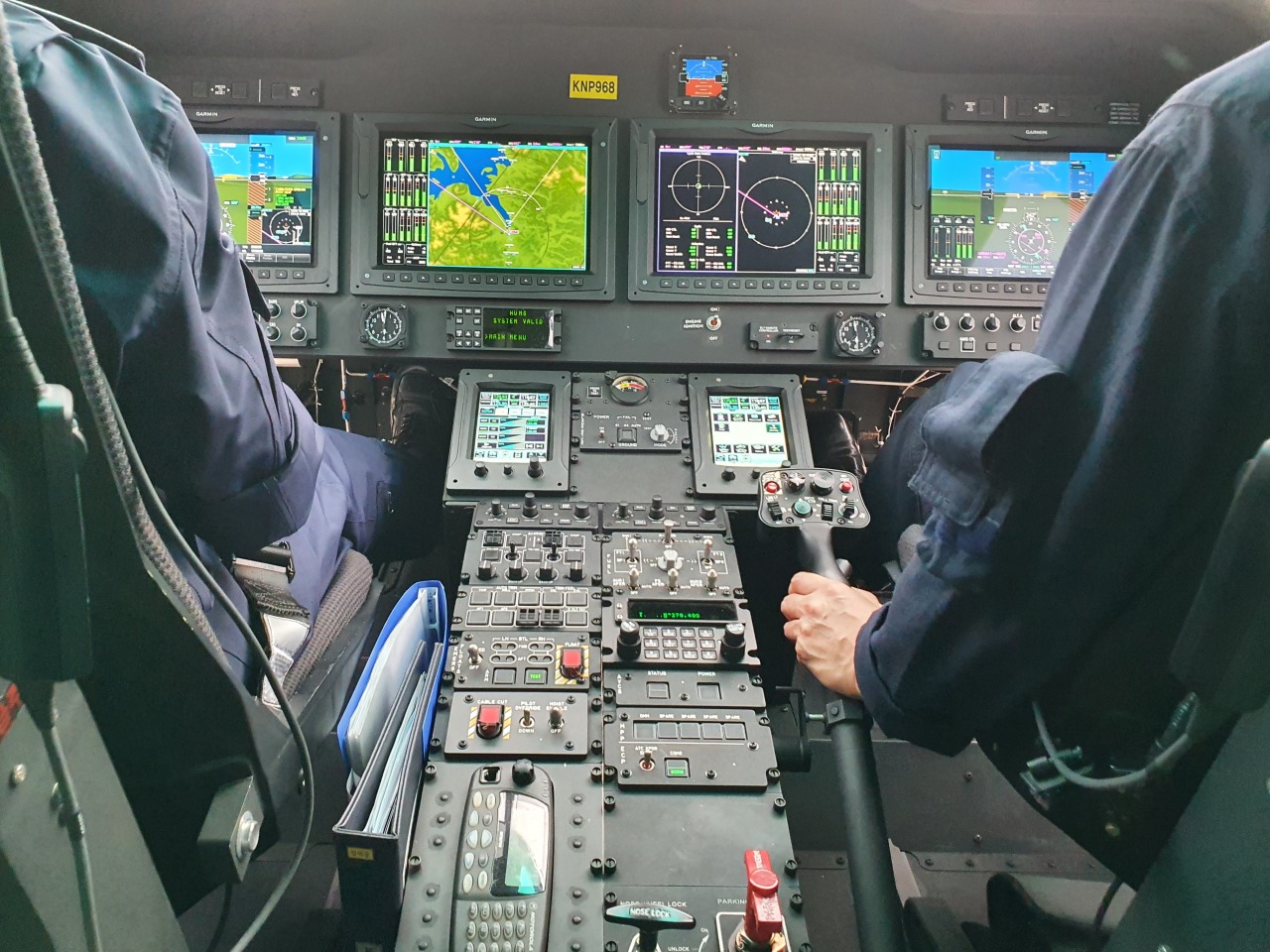 |
Chamsuri cockpit (Kim Byung-wook / The Korea Herald) |
The tactical flight caused familiar low- and high-gravity sensations of a roller-coaster as the chopper veered across the mountain ridge. The chopper tilted left, shifted right, but whatever maneuvers the pilot pulled off, the chopper immediately regained balanced and returned to a level position as if nothing happened, just like the nonchalant pilot chit-chatting about how delicious local anchovies are while having fun with reporters with a series of dizzy moves.
“Chamsuri’s reliable hovering capabilities make it perfect for missions requiring precision, such as rappel, hoist, cargo delivery and special warfare operations,” the pilot added.
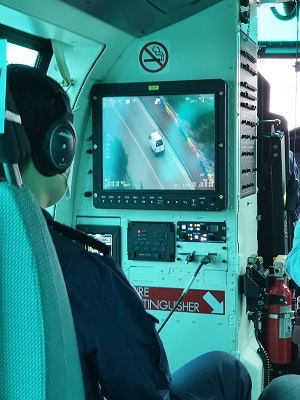 |
A crew tracks a vehicle with Chamsuri’s camera. (Kim Byung-wook/The Korea Herald) |
As the chopper landed at the airfield with an impact as mild as say, a smartphone falling on a thick carpet floor, it felt more like riding an elevator.
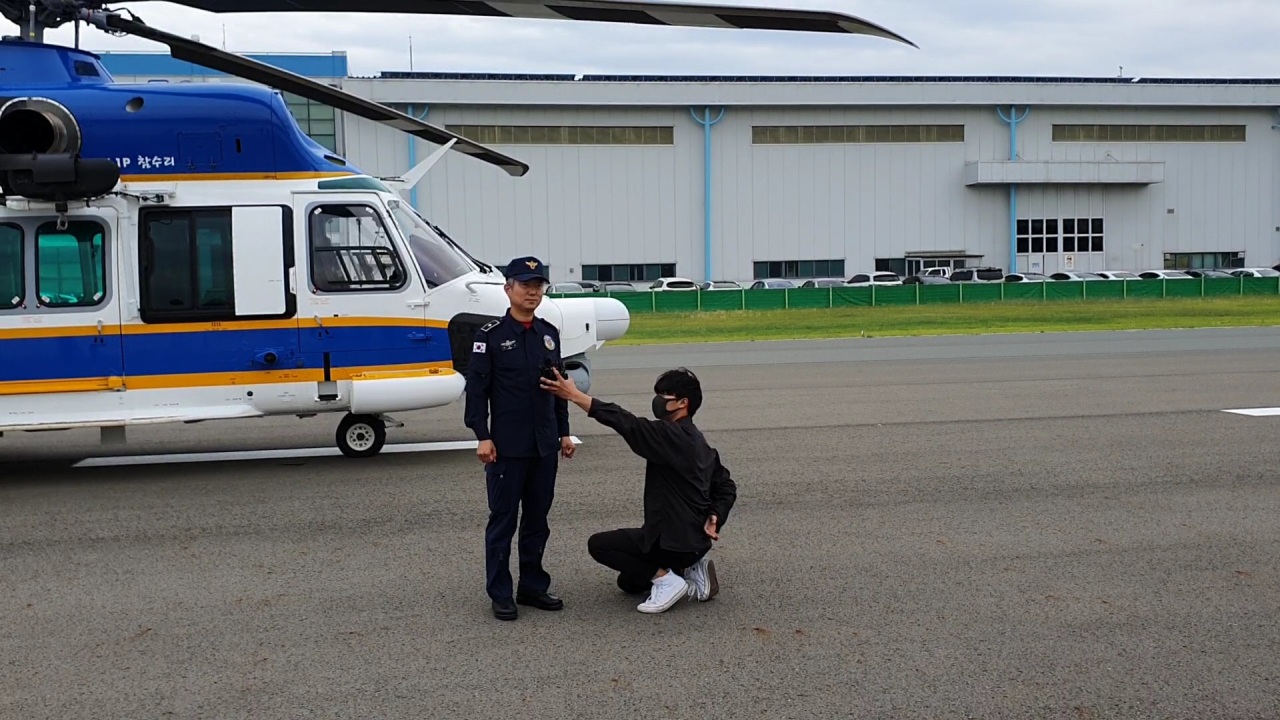 |
Inspector at Gyeonggi Bukbu Provincial Police Agency Park Hyung-sik conducts interview at the airfield. (Kim Byung-wook/The Korea Herald) |
“I have flown more than 10 types of helicopters for the past 25 years, but KAI’s latest model Surion is far easier to control and more stable than previous models thanks to its auto pilot control system,” said Inspector at Gyeonggi Bukbu Provincial Police Agency Park Hyung-sik at the airfield.
“Previously, pilots couldn’t keep their hands off the sticks. However, the auto pilot system of Chamsuri alleviates pilots’ stress as the system allows the chopper to fly on its own without a pilot’s engagement.”
The diplomats were also led to a group tour of KAI’s final assembly line, a classified facility where next-generation KF-X fighter jets were being put together, an itinerary that showed KAI’s marketing dedication to their most valued customers.
Global defense budget cuts have dealt a blow to KAI, with Thailand suspending the purchase of two T-50 advanced trainer jets and Argentina delaying the purchase of several FA-50 light fighter jets in April.
“Trust is the most important factor in the aviation market. Indonesia, Philippines and Thailand, which have all purchased and used aircraft products from KAI, are likely to choose KAI when it buys helicopters in the future. Also, KAI will target countries looking for helicopters that are cheaper than those from US but with superior quality,” a KAI official said.
For KAI, Indonesia is one of the most important markets, as it was the first to purchase KT-1 basic jet trainers and T-50 advanced trainer jets. Also, it is co-developing next-generation KF-X fighter jets with Korea, according to KAI Vice President and General Manager Lee Bong-keun.
When asked about the delayed contribution of 500.2 billion won ($412.5 million) Indonesia owes to Korea for co-developing next-generation KF-X fighter jet, Puji Basuki, first secretary of the Indonesian Embassy in Korea, told The Korea Herald that “it is still being discussed in the capital.”
“The COVID-19 situation is bad for all countries around the world, so we have to be patient. The cooperation will continue, but still we need to renegotiate first on how things are supposed to be moving,” Basuki said, citing “contribution” as things to be renegotiated.
On the day of the test ride, KAI signed an agreement with the government of South Gyeongsang Province and the Human Resources Development Service of Korea to help support the hiring of foreign workforce coming from the 16 countries that fall under South Korea’s Employment Permit System.
By Kim Byung-wook (
kbw@heradlcorp.com)















![[Today’s K-pop] Blackpink’s Jennie, Lisa invited to Coachella as solo acts](http://res.heraldm.com/phpwas/restmb_idxmake.php?idx=644&simg=/content/image/2024/11/21/20241121050099_0.jpg)
